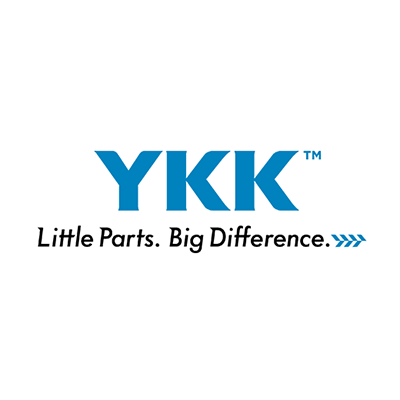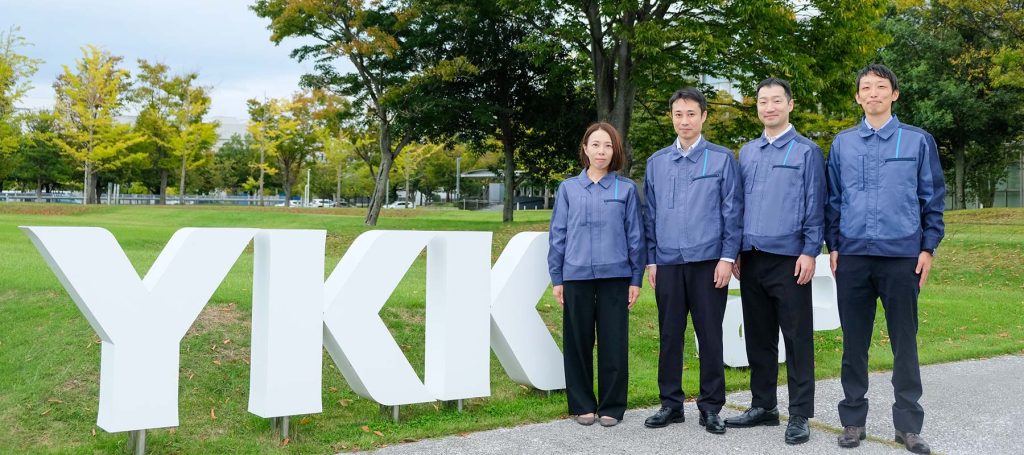
Supporting the Digital Transformation of YKK, a Manufacturing Company: Enhancing AWS Usage Standards and Implementation

Date Published:09 DEC 2024

- The “AWS Usage Standard” created in 2020 had become misaligned with the company’s actual operations.
- Lack of knowledge for effective cloud utilization, including AWS.

- Developed AWS Usage Standards aligned with current usage conditions.
- Built mechanisms to apply these AWS Usage Standards in the AWS environment.
- Provided straightforward, experience-based advice to share practical AWS knowledge.
YKK is a globally recognized brand for everyday life products, well-known for its zippers that are deeply integrated into daily life. As a global manufacturer, the company operates in approximately 70 countries and regions, producing over 3 million kilometers of zippers annually.
In recent years, YKK has positioned digital transformation as a core part of its management strategy. The company has been working to build a strong foundation for enhancing competitiveness, promoting sustainable growth, and reforming work styles through digital technologies. As part of this initiative, YKK has adopted a “cloud-first” policy to drive company-wide use of AWS.
In 2024, to further promote cloud adoption internally, YKK revised its internal “AWS Usage Standard” which outlines system design policies and security operational rules, to enhance cloud utilization within the organization. During this process, Classmethod proposed updating the “AWS Usage Standard” based on the “Classmethod Cloud Guidebook” (hereinafter referred to as CCG) through its comprehensive AWS support service, Classmethod Members.
To understand how YKK is promoting cloud adoption and how Classmethod contributed to this effort, we spoke with key members of the AWS CoE from the Information Systems Department: Ms. Haruka Tajiri, Mr. Mitsuhiro Mizuno, Mr. Shun Muraki, and Mr. Takayuki Minami.
Promoting AWS adoption to the entire company in line with the policy shift from on-premise to cloud
Previously, YKK had primarily relied on on-premises infrastructure for its internal IT systems. However, in alignment with the 6th Mid-Term Management Plan, which outlined a vision for digital advancement, the company adopted a cloud-first strategy in 2023 and has since been actively promoting AWS usage within the organization.
Tajiri, who leads this initiative, explains, “We established a policy to prioritize AWS when considering system configuration, moving away from on-premises and virtual infrastructure. Along with this, we worked on updating the ‘AWS Usage Standard’, the guidelines for using AWS, that we had established in 2021.”
As a manufacturing company, YKK had previously implemented IT based on traditional manufacturing principles. However, considering the evolution of cloud technologies and services, increasing security needs, and the growing importance of TCO (Total Cost of Ownership), the company decided to proactively utilize the cloud to further advance digitalization.
At the same time, the working group (now AWS CoE) established the “AWS Usage Standards”, defining rules for system construction on AWS, including shared account management and configuration policies for each AWS service that is expected to be used. About 10 members worked for three months to compile the AWS Usage Standards, resulting in a document nearly 100 pages long.
During the same period, YKK joined Classmethod Members, relying on our company for various forms of support in AWS implementation.
“When I ask about a service or function, Classmethod’s engineers don’t just explain what it can do, but also provide insight into what’s good and what’s not so good about it, which has been extremely helpful,” says Muraki.
In this way, YKK proceeded to develop governance for actively ongoing AWS usage.
Gaps Between Assumptions and Reality After Four Years of AWS Usage
However, after four years, YKK began to see mismatches between the AWS Usage Standards and actual usage patterns. This occurred because many use cases in practice differed from initial assumptions, causing rules to become misaligned with reality or even completely unnecessary in some instances.
“There were parts of the AWS Usage Standards that had become completely meaningless. If we leave these outdated or irrelevant rules, even necessary rules eventually stop being followed,” explains Minami.
For example, the original AWS Usage Standards recommended minimizing the number of AWS accounts and operating multiple systems within a single account. However, in practice, it is quite difficult to achieve. This is because, when contracting a vendor for development on AWS, in many cases, the vendor would create a new AWS account and deliver it along with the system.
Recognizing these issues, YKK decided to undertake a comprehensive revision of the “AWS Usage Standards” in 2024, reflecting actual usage patterns accumulated over four years. The effort also extended to implementing mechanisms that would enforce these rules consistently across the organization. To support this, Classmethod proposed a new version of the “AWS Usage Standard” based on Classmethod Cloud Guidebook (CCG), the AWS usage guidelines published for its clients, to revise the chapter structure and content to better suit actual usage.
CCG is a document designed to provide sample guidelines and support AWS governance within an organization. It includes best practices and account management strategies. Classmethod Members’ clients have free access to this resource.

“We began revising the AWS Usage Standards in February 2024 and were able to release the latest fourth edition in August. Classmethod helped us structure rules tailored to YKK and implement a system to apply those rules in practice,” says Tajiri.
“We see the implementation as a kind of guardrail. No matter how well we define rules, there’s always a chance that users might overlook them. Guardrails help prevent those oversights.” adds Mizuno.
Classmethod supported not only the guideline revisions but also technical implementations to enforce those rules in the AWS environment. This included proposing efficient methods to deploy standardized configurations across multiple accounts using AWS CloudFormation for security management.
YKK had not previously implemented enforcement mechanisms for their internal rules, nor did they have prior expertise with Infrastructure as Code (IaC), therefore, the support from Classmethod was invaluable, according to all members of the AWS CoE.
“Classmethod’s support for introducing IaC was truly helpful. Without it, we might have had to configure everything manually through the AWS Management Console,” says Mizuno.
New Insights After Rules Revision and Mechanisms Implementation
Along with the release of the new “AWS Usage Standards,” YKK also reconfigured the existing AWS account and systems to align with the new rules using the implementation mechanism. We built a comprehensive security monitoring platform on AWS Security Hub. This centralized platform will show detection results from various security services such as Security Hub standards, GuardDuty, and IAM Access Analyzer in a single dashboard. Also, we have implemented a mechanism that automatically sends alert emails to both the responsible person for that AWS account and the AWS CoE team, if any rule violation occurs.
When this was first implemented, Minami recalls with a laugh, “Hundreds of emails were sent to team members’ addresses, causing temporary panic—We briefly considered disabling alerts due to the volume.” Similarly, Muraki, who is responsible for overall security, smiles wryly and adds, “Now that we can see security situations that were previously invisible, our workload has increased.”

“But it’s better to extinguish small fires before they become large ones. Being able to address issues at this early stage is extremely valuable,” says Muraki.
Because cloud services, including AWS, offer such high convenience that governance can easily be neglected when left entirely to individual departments. To further advance cloud utilization and enterprise-wide digital transformation, proper governance is essential, and this initiative is a critical step in achieving that goal.
As a global company, YKK must develop rules and implementation strategies for governance across all group companies worldwide, not just in Japan.
“We need to start working on global IT governance in earnest from now on. We are about to start talking with some overseas divisions, such as those in the EU,” says Tajiri.
“It’s reassuring that Classmethod has an office in Berlin and can support us through their local presence. They also have offices near some of our other international sites, and we have high expectations for support from them too,” adds Minami.
Through the development of the revised AWS Usage Standards and the creation of implementation mechanisms, YKK’s AWS CoE team has built a strong relationship of trust with Classmethod. Looking ahead, Classmethod will continue to support YKK’s cloud initiatives, including further AWS adoption and global expansion efforts, thereby contributing to the advancement of YKK’s manufacturing.
This case study uses AWS Global Utilization Support.
For global companies that face challenges due to differences in IT infrastructure environments between countries and regions, we provide total support for efficient and consistent IT infrastructure operations, including multilingual technical support, cost optimization, compliance measures, and local staff training.

